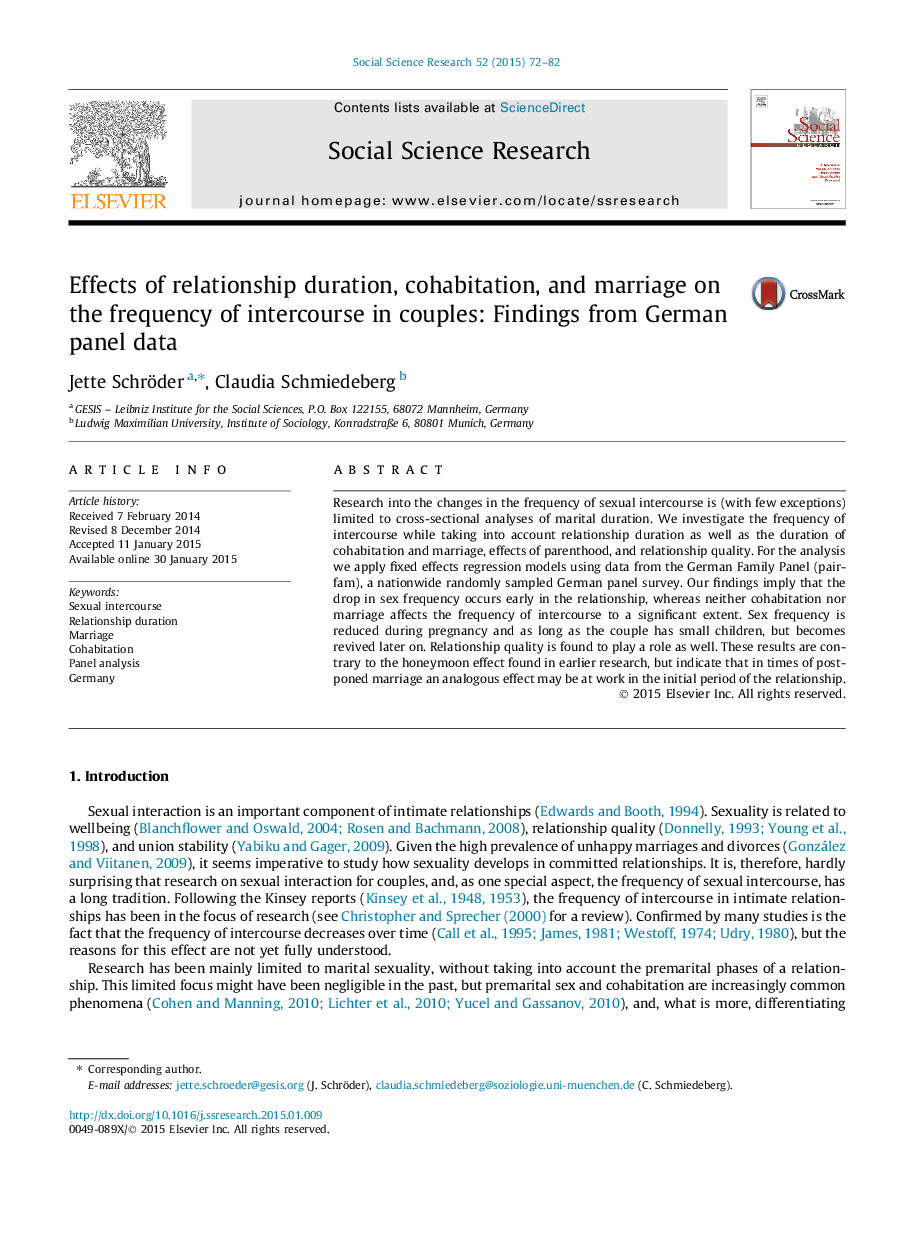| Article ID | Journal | Published Year | Pages | File Type |
|---|---|---|---|---|
| 955687 | Social Science Research | 2015 | 11 Pages |
•The analysis uses longitudinal data from a randomly sampled German panel (pairfam).•Relationship duration affects the frequency of intercourse in couples.•The drop in sex frequency occurs in the first years of a relationship.•Cohabitation and marriage do not affect sex frequency to a significant extent.•Sex frequency is reduced due to parenthood, but becomes revived later on.
Research into the changes in the frequency of sexual intercourse is (with few exceptions) limited to cross-sectional analyses of marital duration. We investigate the frequency of intercourse while taking into account relationship duration as well as the duration of cohabitation and marriage, effects of parenthood, and relationship quality. For the analysis we apply fixed effects regression models using data from the German Family Panel (pairfam), a nationwide randomly sampled German panel survey. Our findings imply that the drop in sex frequency occurs early in the relationship, whereas neither cohabitation nor marriage affects the frequency of intercourse to a significant extent. Sex frequency is reduced during pregnancy and as long as the couple has small children, but becomes revived later on. Relationship quality is found to play a role as well. These results are contrary to the honeymoon effect found in earlier research, but indicate that in times of postponed marriage an analogous effect may be at work in the initial period of the relationship.
